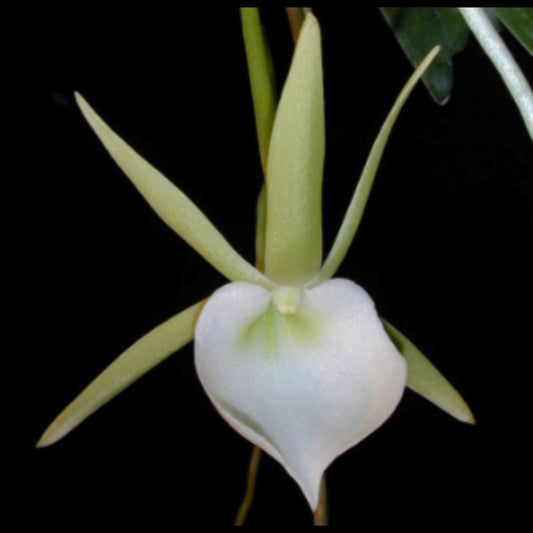
How to Transition Your Orchids into Fall: October Care Tips
As the vibrant colors of summer give way to the crisp air of fall, October marks a crucial transition period for your orchid care routine. The changing season brings different light, temperature, and humidity conditions, which directly affect your orchids' growth and blooming cycles. Proper care during this period will not only help your orchids thrive but also prepare them for their next flowering season. Here’s a guide to help you provide the best care for your orchids in the fall.
1. Adjust Light Exposure
Fall brings shorter days and less intense sunlight, so your orchids may need more light than they received in the summer. While most orchids thrive in indirect sunlight, it’s essential to assess how much light your plants are getting as the sun shifts. You may need to move your orchids closer to a window or to a spot with more morning sun to compensate for reduced light.
Tip: East-facing windows are ideal for most orchid species during fall, as they provide bright, indirect light.
Artificial Lighting: If your home lacks sufficient natural light, consider using grow lights to maintain a consistent light source.
2. Monitor and Regulate Temperature
Fall introduces cooler days and chilly nights, which can stress some orchid species if temperatures drop too low. Many orchids, such as Phalaenopsis and Paphiopedilum, prefer temperatures between 65°F and 75°F during the day, with slightly cooler nights. Avoid letting the temperature drop below 55°F, as this can lead to bud blast or damage the plant.
Tip: Keep orchids away from drafty windows or doors where they could experience sudden temperature changes. If possible, move them to a more controlled indoor environment.
3. Adjust Watering Schedule
With cooler temperatures, your orchids will likely require less water than in the hot summer months. Lower light and cooler air mean slower evaporation, so the growing medium will stay moist longer. Overwatering can easily lead to root rot in the fall, so it’s important to allow the potting mix to dry out slightly between waterings.
Tip: Water your orchids in the morning to give them time to dry before cooler nighttime temperatures set in, reducing the risk of fungal infections and rot.
Check Humidity: Orchids thrive in 50-70% humidity, but indoor heating in the fall may create drier conditions. Use a humidifier or place a tray of water near your plants to maintain optimal humidity.
4. Fertilize Less Frequently
During fall, many orchids enter a period of slower growth or dormancy, making it the right time to scale back on fertilizing. Fertilizing every two to four weeks is usually sufficient, as opposed to the weekly feeding common in summer. Use a diluted solution to avoid overfeeding.
Tip: Use a balanced orchid fertilizer (such as 20-20-20 or 30-10-10) diluted to half-strength. Always water the orchid before applying fertilizer to prevent root burn.
5. Pruning and Grooming
Fall is a great time to clean up your orchids by removing dead or yellowing leaves, spent flower spikes, and damaged roots. This will help the plant direct more energy into new growth and future blooms. If your orchid is still flowering, wait until the spike has completely dried before trimming.
Tip: Sterilize your pruning shears with rubbing alcohol or flame to prevent the spread of disease before trimming.
6. Repotting Orchids
Fall is a good time to assess whether your orchids need repotting before winter. Most orchids benefit from repotting every 1-2 years, depending on the type of medium and plant size. Repot if the medium has broken down, the roots are overcrowded, or there are signs of rot.
Tip: Use a fresh orchid potting mix suitable for your specific species, such as bark for epiphytic orchids or sphagnum moss for moisture-loving varieties.
7. Watch Out for Pests
As temperatures cool, pests like spider mites, scale, and mealybugs may become more problematic, especially if your orchids are moved indoors. Regularly inspect your plants and treat any infestations promptly. Use neem oil or insecticidal soap to control pests without harming your orchids.
Tip: Wipe down the leaves and check under them weekly to catch pests early.
8. Plan for Dormancy
Many orchid species, such as Catasetinae, Dendrobium, and Cymbidium, enter a dormancy phase during the fall. During this period, they stop blooming and rest. Respect this natural cycle by reducing water, pausing fertilization, and ensuring cooler conditions. This rest is crucial for the plant to gather strength for its next bloom.
Tip: Don’t be alarmed if your orchid stops producing new growth or blooms in fall. This is normal and sets the stage for beautiful blooms in the coming seasons.
Conclusion
Fall care for orchids revolves around adjusting to the season’s changes and preparing your plants for cooler months. By managing light, temperature, watering, and fertilizing, you’ll ensure your orchids stay healthy and ready for their next bloom. With these fall orchid care tips, your plants will continue to thrive, bringing beauty to your home even as the days grow shorter.








